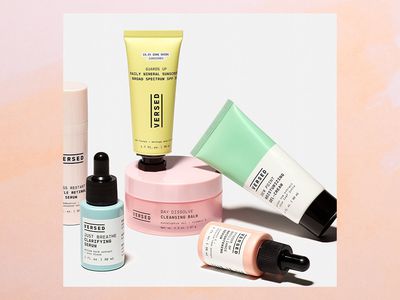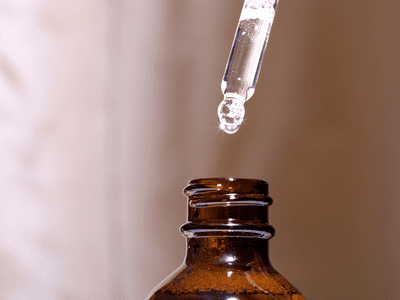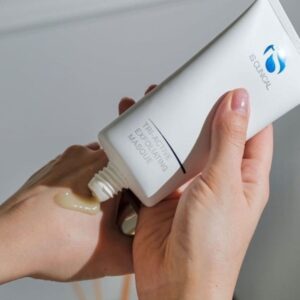
Anti-Fungals Sprays and Acne Who Should Avoid The Final Takeaway
Athlete's foot and other fungal skin infections are absolutely no fun to deal with. Between the itching, burning, and stinging, fungal skin infections are seriously uncomfortable and leave most people looking for a way to get rid of them as quickly as possible. And that's actually a good thing—it's important to treat them right away before they spread to other parts of your body.
One such option for treating fungal infections is anti-fungal sprays. Curious about how these sprays work and whether they might meet your needs? We asked board-certified dermatologists Naana Boakye, MD, MPH, Todd Minars, MD, and Lisa Rhodes, MD, to give us the 411 on anti-fungal sprays. Read on for what they had to say.
What Are Anti-Fungal Sprays?
Anti-fungal sprays are a topical medication, meaning they are applied directly to the skin. They’re used to treat athlete’s foot and other common fungal infections. Typically, anti-fungal sprays contain active ingredients like miconazole nitrate or tolnaftate, and many are available without a prescription.
Aside from sprays, anti-fungal medications come in other forms, such as creams, powders, and pills. "Each vehicle has its own pros and cons, but sometimes it is honestly just preference," says Minars.
Who Typically Needs Anti-Fungal Sprays?
Anti-fungal sprays are used to treat infections like athlete’s foot (tinea pedis), jock itch (tinea cruris), ringworm (tinea corporis), vaginal thrush (candida albicans), and some forms of dandruff, says Boakye. She explains that sprays are often used to treat fungal infections in specific areas of the body, such as the hands and feet. Some people prefer anti-fungal sprays over other types of anti-fungal medication because they’re easy to apply.
Minars points out that anti-fungal sprays also have a drying effect, whereas anti-fungal creams can be moisturizing. "Drying is good when treating common fungal infections because fungus likes moist skin folds—like the groin for jock itch or between two sweaty toes in athlete's foot," he says. "[It's] even better if the anti-fungal medication not only kills the fungus but also helps dry the moist area."
How Can Anti-Fungal Sprays Be Used?
It's a good idea to check in with your doctor before using an over-the-counter anti-fungal spray so you can make sure you're using the correct treatment for whatever condition you have, Boakye says. Think of it this way—you may be convinced you have athlete's foot, but it could be something else entirely. So it's better to have a doctor confirm what you're dealing with before using any medication. Plus, they may suggest you take a prescription medication rather than an over-the-counter option.
Most anti-fungal sprays should be applied to clean, dry skin twice a day. You'll typically need to use an anti-fungal spray for one or two weeks, but you may need to use it for as long as four weeks. "Even if symptoms begin to clear, you should continue using the full prescribed amount of medication to avoid a relapse in the infection," Boakye says.
Using an anti-fungal spray is as simple as spraying the medication directly on your rash. Minars says it's okay to get anti-fungal spray on unaffected areas of your skin. He actually recommends using the spray to cover and even go slightly beyond the affected area when applying it.
If you're using an anti-fungal spray for athlete's foot, apply a moderate amount of medication all over your feet, and don't forget the areas between your toes. "[To prevent] reinfection, sprays can be used once a week directly onto the foot or daily into infected shoes," Rhodes explains.
Most anti-fungal sprays dry nearly instantly, so you don't need to rub them in. "But if the spray leaves the skin moist, then just rub it in and blot off the excess with a paper towel," Minars says. Don't forget to wash your hands afterward.
Can Anti-Fungal Sprays Be Used on Acne?
Despite any TikTok chatter you may have heard, anti-fungal sprays are not the best way to address fungal acne, Boakye tells us. "I would not recommend anti-fungal OTC sprays for fungal acne," she says. She explains that since fungal acne is caused by malassezia, the most effective treatment options are ketoconazole and itraconazole. (Conditions such as athlete's foot and jock itch, by comparison, are caused by dermatophytes.) "Topical treatments, like a cream, are usually the first option if you are experiencing fungal acne," she says. "Depending on how severe the acne is, [an] oral medication may be a better option."
Who Should Avoid Anti-Fungal Sprays?
If you're allergic to any ingredients in an anti-fungal spray, you shouldn't use it. A doctor or pharmacist can help you find a different option.
Other than allergies, anti-fungal sprays don't have many severe side effects, Boakye says. Minars explains that one of the main advantages of topical medications like anti-fungal sprays is that they don't carry many significant side effects unless you're allergic or sensitive to them. "In some cases, the treatment area may become irritated when first using an anti-fungal spray, and you may experience mild redness, burning, or stinging," Boakye says. "However, if you encounter any severe side effects, like an allergic reaction, stop the medication and… contact your doctor immediately."
If you have any cuts on your skin, Rhodes suggests using an anti-fungal cream rather than a spray. This can help you steer clear of uncomfortable sensations like burning and stinging.
The Final Takeaway
Anti-fungal sprays can be an effective treatment for athlete's foot and other fungal skin infections, especially infections on your hands, feet, or areas that would be hard to reach with a cream. Most anti-fungal sprays need to be used for about two weeks. Even if your symptoms begin to clear, you must continue using the medication for however long your doctor recommends.
If you have questions about anti-fungal sprays or want to find out if they're the right treatment for you, make an appointment with a board-certified dermatologist.
Article Sources Byrdie takes every opportunity to use high-quality sources, including peer-reviewed studies, to support the facts within our articles. Read our editorial guidelines to learn more about how we keep our content accurate, reliable and trustworthy.
-
https://my.clevelandclinic.org/health/diseases/24401-fungal-infections-mycosis
-
Hainer BL. Dermatophyte infections. afp. 2003;67(1):101-109.
See More from Byrdie Shopping

11 Must-Try Makeup Tips For Almond-Shaped Eyes From Pro Artists

The Versed Skincare Products Team Byrdie Can't Live Without

How to Use Minoxidil—AKA Rogaine—for Hair Growth, According to Derms


